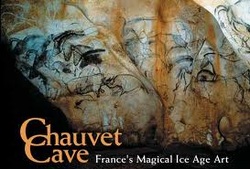 Compared with the 20,000-year-old images at Lascaux or the 17,000-year-old creations in Spain’s Altamira, the art of the Ardèche received scant media attention —until the discovery of Chauvet Cave in 1994. The first photographs captivated specialists and the public alike. For decades scholars had theorized that art had advanced in slow stages from primitive scratchings to lively, naturalistic renderings. Surely the subtle shading, ingenious use of perspective, and elegant lines of Chauvet’s masterworks placed them at the pinnacle of that progression. Then carbon dates came in, and prehistorians reeled. Approximately twice as old as those in the more famous caves, Chauvet’s images represented not the culmination of prehistoric art but its earliest known beginnings. A few thousand years after anatomically modern humans appeared in Europe, cave painting was as sophisticated as it would ever be. Get the whole story in the pages of National Geographic magazine.
0 Comments
Leave a Reply. |
Sketchy Tours
Why wouldn't you want to go to France? History, art, food, wine, what else is there? Categories
All
Archives
July 2020
|
 RSS Feed
RSS Feed
